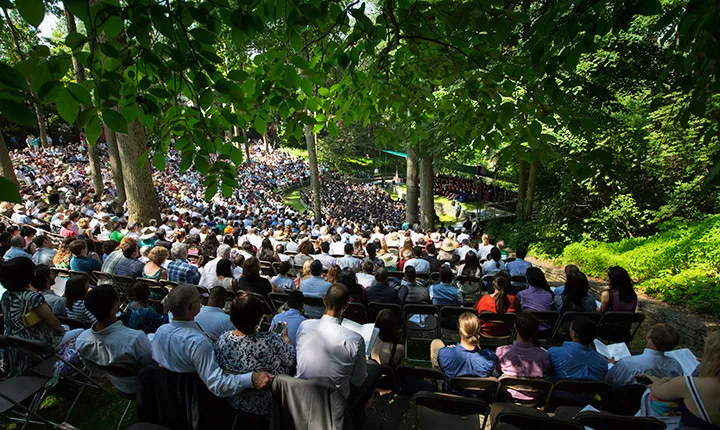Swarthmore's Campus: An Endless Source of Inspiration

Washington Post: If any place can get young minds to unplug, it’s a college sitting on an arboretum
From the earliest days of higher education, the sages understood the importance of a contemplative environment for study and learning. Plato had his olive grove of Akademia, Christian monks turned inward to the verdant cloister, and Thomas Jefferson built his academy around the Lawn at the University of Virginia.
It is no accident that many of the nation’s top universities hold their graduation ceremonies this month outdoors, in the designed landscape. Perhaps no other institution has embraced this ideal more than Swarthmore College, the small liberal arts college 10 miles southwest of Philadelphia.
Established by Quakers in 1864 and co-ed from the start, the college includes an arboretum celebrated for its horticultural excellence and display. Created in 1929, the Scott Arboretum grants Swarthmore’s 1,500 students an academic life immersed in the plant kingdom, although the arboretum welcomes visitors as well. Covering about 300 acres, it fuses three key elements: an arboretum of old and rare trees, a series of designed gardens around and among the college buildings, and a group of major plant collections that include magnolias, flowering cherries, hydrangeas and tree peonies. Add to that an adjoining 220-acre native hardwood forest — Crum Woods — and you reach the idea that if any place can take young and curious minds out of the digital universe and back into the physical world, it is here.
“When the weather gets nice out, you see people reading outside under the trees rather than inside in the library with a laptop,” said Kate Crowley, 22, a graduating senior. “And yeah, with real books.”
Sometimes, the gardens function as an outdoor classroom — exquisitely at the Science Center, where the outer wall of one building doubles as a chalkboard.
...
Two gardens move front and center for this weekend’s commencement, performing as the sort of ritual spaces that are so important to forging bonds and memories on any campus.
The first is the Dean Bond Rose Garden, once a typical postwar formal garden of hybrid teas, floribundas and not much else, the sort of rose gardens that gave roses a bad name for their fussiness and chemical dependence. Its replacement offers a rose garden for the 21st century: full of carefully selected, disease-resistant varieties incorporated into plantings with heirloom varieties and species and all set in a broader garden context of perennials. The climbers and ramblers share their bowers with clematis.
This Sunday, by tradition, approximately 350 graduating seniors will go to the garden, select a rose and have it pinned to their gown. They will then proceed to the commencement ceremony itself, which occurs in the Scott Outdoor Amphitheater. The signal feature of the college, the amphitheater recalls Classical Greek amphitheaters but is given a sylvan setting. Old tulip trees rise like columns from the eight tiers, which are edged in stone but grassed. The tradition of commencement in this space is so strong that it is held rain or shine. ...
Read the full article at The Washington Post.



